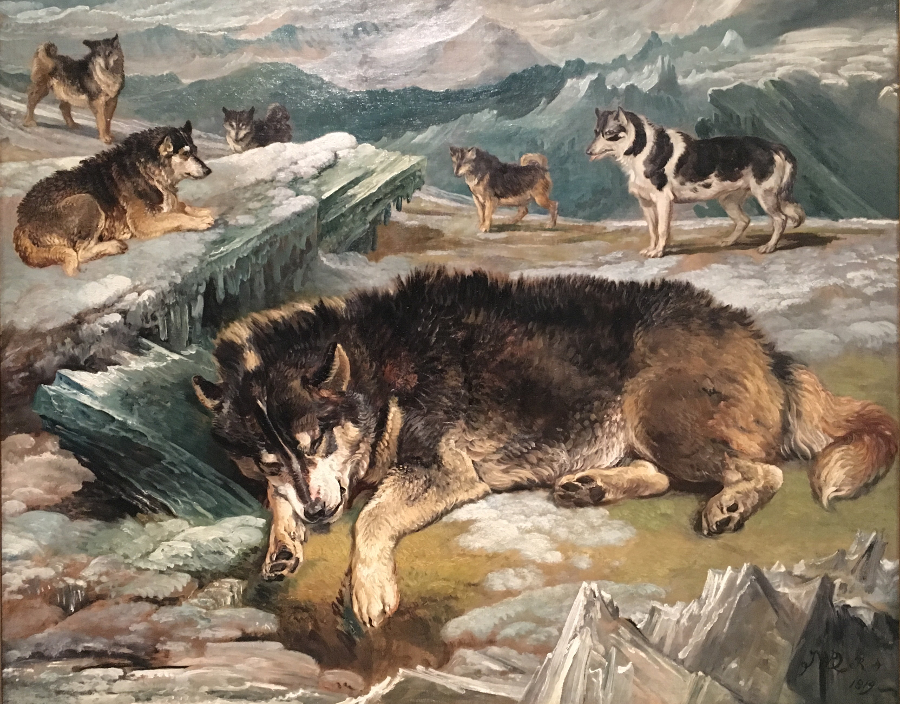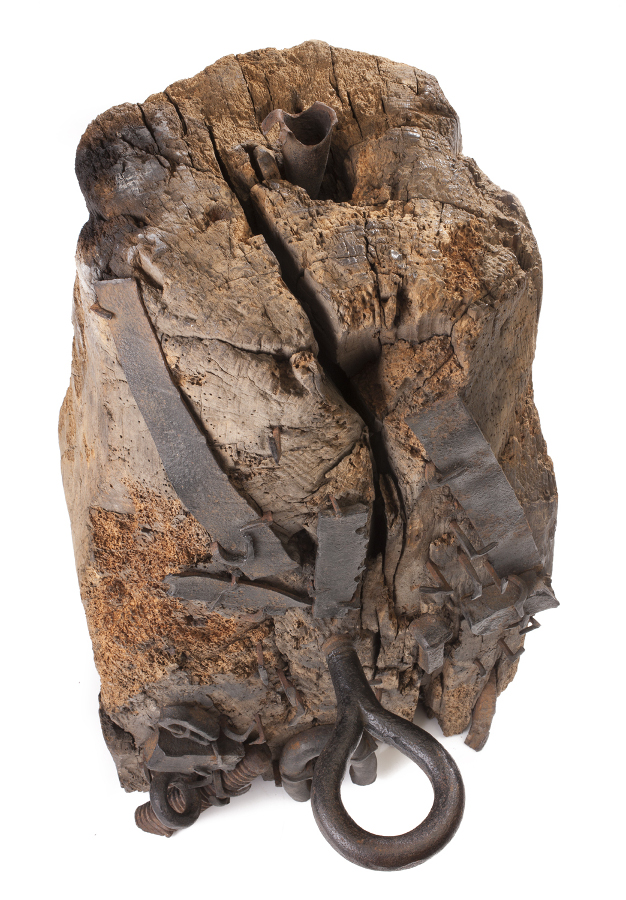In The Arctic: Real and Imagined Views from the Nineteenth Century, we see how art serves not only as a record of historical events but as a direct influence upon how that history gets told. As more and more Europeans made their way to the Canadian Arctic in the 19th century in search of the Northwest Passage, a large body of artworks were produced that presented a romanticized version of the North – a forbidding realm of both beauty and terror to be faced only by the bravest and heartiest sailors of the British Empire. These images fueled the public’s fascination and support for the British Admiralty in its quest for colonial expansion. And while this great effort was ultimately a failure in terms of establishing new shipping routes, the resultant artwork succeeded tenfold in creating a lingering iconography of the North.
The goal of the exhibition was to try to tell this story (or
rather the story behind the story) while juxtaposing it with a more nuanced
look at the Arctic. With the aid of cultural consultants James Kuptana and
Sophia Lebessis, and artifacts and material from across Glenbow’s collection,
we sought to examine some of of the distortions produced by the “official”
colonial narrative and balance it with stories from the people who not only
survived, but thrived, in the true North: the Inuit.
With the exhibition winding to a close this weekend, we take a look back with curator Travis Lutley.
What were some of the highlights for you in putting this exhibition together?
Definitely the biggest highlight was working with cultural consultants Sophia Lebessis and James Kuptana and Indigenous Studies curator Joanne Schmidt and crafting a conversation around the material and themes of the exhibition. That was the most interesting and added the most to the exhibition experience, making it unique and relevant. Another highlight for me was being able to talk about material in [Glenbow’s] collection that we often don’t get a chance to – the prints and other art that we used was not something a lot of institutions feel is worth talking about as art. There’s a tendency to look at it as historical documents or reference but rarely does it receive the benefit of an artistic conversation.
What insights did you gain into how art influences history and its perception?
Maybe the most obvious thing was in just how manipulated historical narratives are in the first place – that became quite apparent. And it’s not always heavy-handed – it can be very subtle things, but it’s still manipulation. That intention exposes itself over time. So as we look back on it, it becomes very clear that there’s an agenda here. So keeping that in mind, it becomes a very contemporary issue about the world we live in now and manufacturing imagery and things. There is a bit of connection there that I have made through some of the tours, but people have also made [the point] to me personally. One guy said mid-tour, ‘so this all about fake news then?’ Well, maybe not maliciously or overtly fake, but there is some connection there.

One object in particular garnered a lot of attention – the anvil base recovered from the Franklin expedition. Could you tell us a little bit about it?
We knew we had this item and its attribution, but nobody else did – that was kind of the big reveal from the research. In trying to confirm the story we had, I reached out to a few people at other institutions and in doing so, kind of illuminated the fact that we had this thing which was assumed to be destroyed or lost: an anvil base from the Beechey Island gravesite brought back to the UK in 1851 from the 1850 – 1851 search expedition for Franklin. It was one of many items brought back, so in trying to figure exactly who brought it back we got in touch with some external scholars and kind of let the world know we had it, and that’s where all the interest and excitement is coming from.

And apparently the”re-discovery” of this object has led to further research, correct?
Indeed. What we’re going to do once the piece is off exhibition is work with Glenbow’s conservation department and external curators from the UK to see if we can identify some of the individual parts on it. What we’d like to do is determine which ship it came from – the Terror or the Erebus. And also, eventually, we’d like to find out who brought it back. We know when it came back, when it went into the museum we acquired it from, but there were a lot of ships in that 1850 -51 season in the Arctic, so it’s a little unclear who brought it back. We’ll be working with Jeremy Mitchell, who is the Curator of Maritime Technology at the Greenwich Royal Military Museums – he’s kind of the person to ask about this in the world. Oftentimes when you do this you have to look forever and you may never find the right person to pose these questions to, but he’s the right person.
What kinds of reactions did you get from visitors?
It’s been a wild group of people that have come through here. I did Art Baby tours for the first time! So, I’ve had everyone from fascinated young mothers to University professors to archaeologists and historians from Parks Canada to individuals who have been to the Arctic themselves… it’s been a wide variety of people, all with great reactions to how we’ve put it together, just the subject matter and seeing something we haven’t done here in a while presented on a scale that they’re just not getting in the city. People have been really excited about it.
Catch The Arctic: Real and Imagined Views from the Nineteenth Century before it closes this weekend. The final day to see the exhibition is Sunday, January 6.
Top Image: William Browne, Noon in Mid-Winter, from Ten Coloured Views, 1850, Collection of Glenbow
